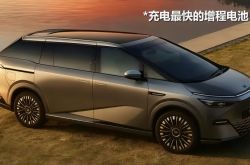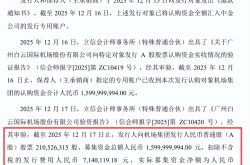SAIC-GM, a new leader to lead the way forward
![]() 09/12 2024
09/12 2024
![]() 647
647
How to break through, imminent
Text
SAIC-GM, riding on the wave of reform and opening up, has taken root in the fertile soil of Shanghai, opening up boundless possibilities in the Chinese market.
Chevrolet Le Mans, which pioneered the joint venture family car market, brought the first car experience to millions of ordinary families; Buick GL8, with its own strength, carried half of China's MPV market; and the GM Pan Asia Technical Automotive Center (PATAC) made SAIC-GM the "Global Technical Deputy Center" of General Motors.
However, even such a strong and deeply rooted joint venture automaker has struggled more and more in the new energy era.
By summarizing SAIC-GM's sales data for the first seven months of this year, Electric Power Trends found that its sales have been declining since March. In just four months, SAIC-GM's monthly sales plummeted from around 63,000 to 15,000, and in the first seven months of this year, SAIC-GM experienced a year-on-year decline of more than 50% in four months.
Undoubtedly, judging from the decline in sales, SAIC-GM has entered a critical moment.
Facing the market turmoil, SAIC-GM quickly adjusted the helm of this large ship.
In early August, Lu Xiao, the former Executive Deputy General Manager of PATAC, succeeded Zhuang Jingxiong as General Manager of SAIC-GM; Wang Conghe, the former Deputy General Manager of PATAC, became the Executive Deputy General Manager of PATAC; and Cai Bin, the former Assistant President of SAIC Motor, assumed the position of Party Secretary of SAIC-GM.
Can this collective change in leadership save SAIC-GM from the throes of the new energy era?
Why is the new energy wave impacting joint venture automakers?
As ordinary consumers, we can clearly perceive a phenomenon in recent years: once popular and dominant joint venture automakers have generally lost their voice. In an era where even Mercedes-Benz and BMW's new energy vehicles can be ridiculed as "knockoffs," SAIC-GM has indeed suffered a significant impact.
The massive influx of new energy vehicles has not only shrunk the market share of joint venture automakers but also eroded their reputation and credibility.
In the process of creating hype again and again, some people have even resorted to using the term "fig leaf" to describe the market price standards once established by joint venture automakers. And those who have raised the banner of attack have described their actions as "tearing off the joint venture fig leaf."
Faced with such market shocks, the only thing joint venture automakers like SAIC-GM could do in the early stages was to "swallow their pride."
Entering the new energy era, joint venture automakers have generally been slower in transitioning and expanding their market share compared to domestic automakers and new force automakers. The reasons for this are quite clear.
Around 2018, many new force automakers were just emerging. At that time, both new force automakers and the entire new energy automotive industry were basically in a state of "losing money." For joint venture automakers, gasoline-powered vehicles were still the "cash cow."
Taking SAIC-GM as an example, from 2018 to 2022, models like the gasoline-powered Buick Excelle, Buick Envision, and Buick GL8 sold well.
At this point, SAIC-GM obviously could not afford to revolutionize itself by abandoning the upgrading of gasoline technology to pursue unprofitable new energy ventures. For a long time, SAIC-GM focused on improving its gasoline technology and introduced the eighth-generation Ecotec engine series, including the 2.0T variable cylinder engine, 1.5T "Avatar" engine, and 9AT Hydra-Matic transmission.
However, it is evident that many joint venture automakers, including SAIC-GM, misjudged the market changes. They did not anticipate that pure gasoline technology would come to an end so quickly or that the new energy vehicle industry would develop so rapidly.
By 2024, the penetration rate of new energy vehicles had surpassed 50%, becoming the mainstream choice for consumers.
Yet, SAIC-GM's current main sales still come from gasoline-powered vehicles. Therefore, the underlying reason for SAIC-GM's recent decline in sales is ultimately due to its inability to boost sales of new energy vehicles.
Fun Fact: General Motors' new energy technology is not weak
To this day, many people still associate Buick, Chevrolet, and Cadillac with large displacements and high fuel consumption. This is the destructive power of stereotypes.
In reality, General Motors has not only been developing environmentally friendly engines with low fuel consumption but is also a pioneer in new energy technology.
As early as 1996, General Motors launched the world's first mass-produced pure electric vehicle, the GM EV1. Fourteen years later, General Motors introduced the Chevrolet Volt, a range-extended electric vehicle, putting it at the forefront of the global automotive industry.
However, due to General Motors' long-term reliance on gasoline-powered vehicles for profitability, its new energy vehicles were primarily used for technological reserves rather than having significant market impact. By the time China's new energy automotive industry took off, General Motors finally realized the potential.
In 2021, SAIC-GM announced the introduction of General Motors' latest Ultium platform, and it wasn't until 2023 that SAIC-GM officially launched its first Ultium-based model, the Cadillac LYRIQ.
Even so, the Ultium platform boasts impressive technical capabilities.
For example, to ensure safety, the Ultium battery system employs a seven-layer protection design, including aerogel insulation between cells, independent liquid cooling modules, rapid exhaust valves, and high-flux explosion-proof valves. These designs effectively address the issues of spontaneous combustion and deflagration in high-capacity drive battery systems.
Furthermore, the wirelessly connected battery management system minimizes the risks associated with wire harness aging and enhances vehicle lightweighting. The 8-in-1 high-efficiency drive motor achieves a balance between performance and energy consumption, effectively improving the range efficiency of pure electric vehicles.
From these technologies, it is clear that the Ultium technology platform introduced by SAIC-GM focuses on upgrading the core components of electric vehicles. In 2023, the author also visited an institution to observe the disassembly of the Ultium technology platform.
During the disassembly process, we found that models built on the Ultium platform, such as the LYRIQ, were well-equipped with high-quality materials.
Take the insulation technology between battery cells as an example. Many high-end electric vehicles still use foam glue for insulation. However, the Ultium platform employs a significant amount of aerogel modules, which outperform traditional foam glue by several times in terms of strength, lightweight performance, and insulation capabilities. Of course, this approach results in a substantial increase in costs, making it difficult to reduce the overall vehicle price.
In fact, after this disassembly, the author had some concerns about SAIC-GM's new energy strategy.
Generally speaking, modular platforms for electric vehicles are designed to reduce costs. However, the Ultium platform, with its advanced technology system and solid materials, clearly does not serve this purpose.
As a result, when the Cadillac LYRIQ was launched, a price war in the new energy market ensued. Even after an official price reduction, the starting price of the LYRIQ remained at 297,700 yuan. Clearly, this price is not very competitive in the niche market.
But what can SAIC-GM do at this point?
Creating more distinctive products: SAIC-GM's future holds more than just a glimmer of hope
From the current overall environment of the new energy vehicle market, Electric Power Trends believes that there is a severe phenomenon of homogenization, with relatively few distinctive models. Under such market conditions, SAIC-GM still has the opportunity for restructuring and upward development.
Historically, General Motors, as an American brand, is known for its proficiency in creating high-displacement, high-performance vehicles. Especially in the fields of full-size SUVs and pickup trucks, it undoubtedly excels.
For products with advantages, General Motors also has advanced technologies.
For instance, in the field of large-displacement engines, General Motors has continuously innovated and upgraded to create the world-renowned small-block V8 engine, the LS7. If SAIC-GM can combine the concepts of "large displacement" and "new energy" at this juncture, it may be able to create new phenomenal products.
For example, Buick has leveraged PATAC to develop localized products like the Buick Century and Buick GL8 PHEV. Among them, the Buick GL8 PHEV enhances overall performance and efficiency through hybrid technology.
However, in the current plug-in hybrid market, 1.5T and 2.0T plug-in hybrid models are overly common.
Take the Buick Century, a luxury MPV, as an example. Currently, it is only available with a 2.0T displacement, and there may be a 1.5T PHEV version in the future. In terms of power systems, it fails to differentiate itself from the lower-end GL8 series.
Therefore, if PATAC can integrate PHEV technology with large-displacement engines, it may open up a differentiated product competition landscape. Imagine if Buick could develop a V6 engine-based plug-in hybrid MPV or if Cadillac could introduce a V8 engine-based plug-in hybrid high-performance sedan – what a game-changer that would be!
This is just one of the author's suggestions, as the current new energy market is plagued by homogenization. In the view of Electric Power Trends, relying solely on existing pure electric and plug-in hybrid products to compete in the market will make it difficult for SAIC-GM to create a unique memory point for consumers. To create a "memory point" or "differentiating advantage" with its unique attributes, SAIC-GM must adopt unconventional strategies.
Apart from developing distinctive products, another way for SAIC-GM to overcome its difficulties through new energy products is to leverage the supply chain from Chinese manufacturers to reduce costs.
For example, when developing new technologies, SAIC-GM and PATAC can appropriately rely on Chinese manufacturers for technical support. Take GAC Toyota as an example. When entering the second half of the new energy competition, the company leveraged Chinese manufacturers like Momenta and Huawei for the development of intelligent systems. This approach could serve as a shortcut for SAIC-GM to reduce costs and improve efficiency in development.
However, for SAIC-GM, PATAC is its flagship. Collaborating with other Chinese manufacturers poses a significant "face" issue. In the view of Electric Power Trends, substance is far more important than face. If Toyota and Volkswagen can do it, why can't General Motors?
Perhaps this last-minute leadership change at SAIC-GM is an attempt to adopt a new strategy.
Lu Xiao, the new General Manager of SAIC-GM, has a solid technical background. He has led the development of strategic models like the Buick Regal, Buick LaCrosse, and Chevrolet Malibu and was the first Chinese chief engineer in the Global Platform of General Motors.
Perhaps after taking office, Lu Xiao can combine the actual needs of the Chinese market with the superior resources of General Motors, as well as integrate the supply chain advantages of the Chinese new energy market with the strategic development of General Motors, thereby promoting the growth of SAIC-GM in the Chinese new energy market.
However, Lu Xiao faces significant challenges upon taking office. The core issue lies in ensuring that SAIC-GM's two major shareholders work together to support Lu Xiao in carrying out sweeping reforms within the company. After all, if SAIC-GM fails to muster the courage to make bold decisions, this joint venture automaker may truly capsize.
Final Thoughts:
From sales to the rate of transformation into new energy ventures, SAIC-GM's performance over this period has clearly been inadequate. Electric Power Trends believes that the crisis facing General Motors in 2024 may be even more severe than that in 2008. After all, the automotive industry in 2024 is not only facing economic downturns but also the turmoil and anxiety brought about by the transition between old and new eras.
SAIC-GM is approaching the 30-year mark of its cooperation agreement between its two shareholders. In essence, the company has only three years left. Within these three years, the key to SAIC-GM's resurgence lies in its new energy ventures. Facing this critical issue, will SAIC-GM adjust its development strategy? Will there be new adjustments in product planning and supply chain cooperation? We eagerly await the outcome.





